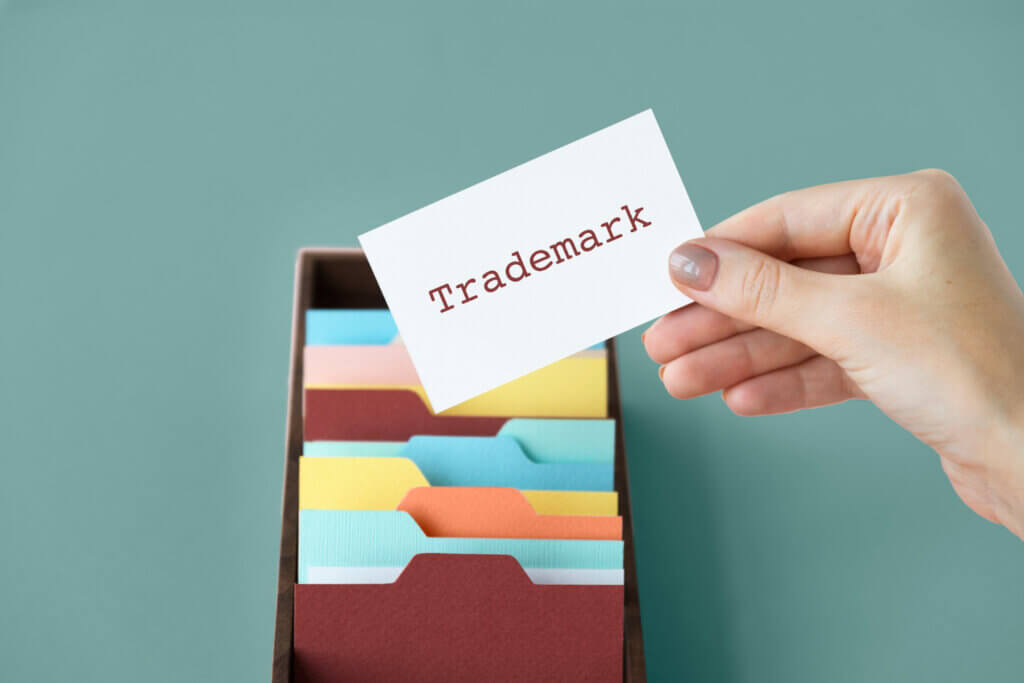- Blog
-
For Sellers
Amazon side hustle: Can Amazon FBA income replace your 9-to-5?
Everyone talks about quitting their job with FBA. But the real question is how many hours—and how much hustle—it actually takes.

Your coworker just mentioned they’re making money selling on Amazon on the side. They casually drop how they paid for their vacation with “Amazon money” while you’re still figuring out how to stretch your paycheck to the end of the month. Intriguing, right?
Amazon side hustles have become the modern equivalent of that mysterious neighbor who never seems to go to work but somehow affords a new car every few years. The platform offers regular people a legitimate path to extra income—sometimes substantial income—without requiring a business degree or investors.
But can selling products through Amazon FBA (Fulfillment by Amazon) actually replace your day job? Or is it just another internet fairy tale, like passive income from posting travel photos or becoming an overnight YouTube sensation? Let’s explore what it really takes to transform your evening and weekend Amazon project into your primary source of income.
Amazon FBA as a side hustle
Amazon is an ideal side hustle because of its FBA program. With FBA, sellers can focus on sourcing and growing their product lines while Amazon handles the storage, packaging, and shipping of these products.
Amazon will also handle customer service and returns. Other benefits include gaining access to Amazon’s vast customer base and Prime shipping, which leads to increased sales. Moreover, the convenience of not having to deal with the nitty-gritty of fulfillment logistics is a big game-changer for many entrepreneurs.
As a side hustle, Amazon FBA offers the following benefits:
- Flexibility: You can start small and scale up gradually, making it an ideal choice for those with limited time or resources.
- Low barrier to entry: Compared to traditional business models, Amazon FBA requires relatively little upfront investment.
- Access to Amazon’s ecosystem: Leveraging Amazon’s infrastructure and customer base can give your side hustle a significant boost.
Time investment for Amazon FBA
However, you shouldn’t make the mistake of thinking that Amazon FBA will require little of your time and effort. Even as a side hustle, you still need to invest considerable time researching the right products, setting up your store, and becoming familiar with the Amazon platform.
You’ll likely spend several hours weekly managing your business and keeping your store operational. You’d also need to spend time marketing your products.
But time isn’t the only factor affecting the success of your Amazon side hustle. You also need to learn about product selection and competition. You also have to choose the right business model and equip yourself with the right tools.
Business models for your Amazon side hustle
There are four main ways you can run an Amazon business. Some are cheaper and easier to start, while others offer greater long-term potential.
To find the right business model, you need to ask yourself about your goals for starting the business. Is it to have a second source of income or to create a long-term business that ultimately frees you from your job?
You should also find out your ability to invest time and money in the business upfront and how much effort you’re willing to commit on a weekly basis.
Here are four Amazon side hustle business models you can choose depending on your goals and situation.
1. Retail arbitrage
This is one of the most popular Amazon side hustles because you don’t need a huge budget to start. Retail arbitrage involves physically visiting local stores, clearance sales, and thrift shops to find products at a lower price than their potential selling price on Amazon.
Pros of retail arbitrage:
- Low start-up cost: Retail arbitrage requires minimal upfront investment, making it accessible to beginners. You can start with only $500 to $1,000 as initial capital.
- Wide product variety: You can sell a range of products, depending on what you find in stores.
- Quick start: You can begin selling almost immediately after finding profitable products.
Cons of retail arbitrage:
- Limited scalability: Sourcing products from physical retail stores can be time-consuming, limiting your ability to scale.
- Competition: As it’s easy to enter, you’ll face competition from other arbitrage sellers.
- Fluctuating supply: The availability of profitable products can be inconsistent.
To get started, visit local retail stores and discount shops to find products at a lower price than their selling price on Amazon. Use apps like ScoutIQ and Scoutify to scan barcodes in-store and instantly see if a product is worth buying to resell on Amazon.
Retail arbitrage is ideal for those who enjoy shopping and don’t mind the legwork. It’s an easy way to earn a decent profit as long as you research your products thoroughly. However, if you want a long-term, scalable business, the physical sourcing aspect may limit your growth.
2. Online arbitrage
Online arbitrage follows the same principle as retail arbitrage but eliminates the need to physically visit stores. Instead, you source products from online retailers and marketplaces at a lower price and resell them on Amazon for a profit.
Pros of online arbitrage:
- Location independence: You can run your business from anywhere with an internet connection.
- Time flexibility: No need to visit physical stores during business hours—source products any time of day.
- Efficient research: Tools can scan thousands of products across multiple websites quickly.
- Data-driven decisions: More easily track price histories and trends compared to in-store shopping.
Cons of online arbitrage:
- Higher competition: The convenience factor means more sellers may target the same products.
- Shipping delays: Multiple shipping stages can affect your inventory turnover rate.
- Return complications: Managing returns for products you never physically handled can be challenging.
To succeed with online arbitrage, you’ll need tools that can efficiently search multiple websites for profitable products. Tactical Arbitrage is specifically designed for this purpose, allowing you to compare prices across 1,500+ online retailers to identify profitable reselling opportunities without leaving your home.
Online arbitrage works well for side hustlers with limited free time who prefer working from home. The ability to automate much of the product research makes it an efficient use of your limited side hustle hours.
3. Wholesale
Another popular Amazon side hustle is buying products in bulk and then reselling them on Amazon. This is called the wholesale business model and involves working directly with a wholesale supplier or product manufacturer. You’re still selling another brand’s product, but you’d be getting them at higher discounts because you’re purchasing a larger inventory.
However, you need a huge amount of capital to make this business model work and maintain a good relationship with your supplier for them to provide you with quality goods on time. You still also need to conduct thorough product research and be certain of the product’s appeal to your customers to ensure you’re not stuck with inventory you can’t sell.
Pros of wholesale:
- Scalability: Wholesale allows for higher volume sales and the potential for a full-time income.
- Consistent Supply: Suppliers provide a steady source of inventory, reducing sourcing challenges.
- Brand Recognition: You can sell well-known brands, benefiting from existing customer trust.
Cons of wholesale:
- Higher initial investment: Compared to retail arbitrage, wholesale may require a more substantial initial capital investment.
- Competitive market: Wholesale can be competitive, with other sellers offering the same products.
- Supplier relationships: Building relationships with reliable suppliers is crucial, but can take time.
If you want a side hustle that can turn into a scalable business, the wholesale model might work for you. There’s a lot of upfront work and resources involved, but once you get past the initial stage, your business will be set for long-term rewards.
To get started, you need to purchase product samples from suppliers and test their quality before committing to a larger order. As with any Amazon side hustle, you should already know which market you’d target and which products have the highest probability of bringing in consistent sales.
4. Private label
The private label model involves sourcing generic or unbranded products, usually from overseas manufacturers, and labeling them with your brand or logo.
Pros of private label:
- Brand control: You have control over the branding and marketing of your products, fostering brand recognition. You are also in control of every aspect of your Amazon business.
- Higher profit margins: Private label products can yield higher profit margins compared to reselling branded items since you determine the selling price and desired margins.
- Less competition: You create a somewhat unique product, reducing direct competition with identical listings. You can leverage your brand reputation to increase the value of your product.
Cons of private label:
- Higher Risk: There’s a risk of investing in inventory that may not sell as expected. You also face the risk of branding a generic product with poor quality or one that’s easily copied by other sellers. This will be a liability to your brand reputation and could harm it in the long run.
- High initial investment: Building a private label brand often requires a significant upfront investment in terms of inventory, manufacturing or supplier costs, brand development (logos, packaging, labels), and product research.
- Slow payouts: Because of the intense upfront investment, it can be slower to hit profitability since you need time to build your brand and drive sales to your product.
The private label business model is the most time-consuming and capital-intensive of all the Amazon side hustles listed here. However, it’s the one that has the highest potential to become a long-term business. It’s also a business you can easily expand to other online and offline sales channels.
To get started, you need to brainstorm brand names and product ideas. Invest time in learning how to build a brand and find the perfect products. You also need to think long-term and potentially consider creating your own online store and selling your products on other ecommerce platforms like Walmart.
Getting started with Amazon FBA as a side hustle
Once you’ve decided on a business model to pursue your Amazon side hustle, it’s time to put your plans into action. For side hustlers, time is of the essence since you’re mostly working in your spare time. Here are the steps to kickstart your business:
1. Create an Amazon Seller Account
The first step on your Amazon FBA journey is to set up an Amazon Seller account. You can choose between an Individual or a Professional account. For most aspiring FBA sellers, the Professional account is recommended as it provides additional features and allows you to sell an unlimited number of products.
2. Research your products and choose your niche
Before diving in, invest time in market research. Explore various product categories and niches to find those with high demand and reasonable competition. Tools like Amazon’s Best Sellers list, Google Trends, and specialized software can help you identify promising niches.
3. Source products
Depending on your business model, you can either search for profitable products to resell online or look for manufacturers of generic items that you can rebrand. If you have an idea for a unique product, you can look for manufacturers who can bring the vision to life. Choose the sourcing method that aligns with your budget, risk tolerance, and business goals.
4. Prepare your products
Before sending your products to Amazon’s fulfillment centers, ensure they meet Amazon’s packaging and labeling requirements. This includes labeling products with unique barcodes (UPC, EAN, or ISBN) and packaging them securely.
5. List your products on Amazon
Create product listings on Amazon by writing persuasive product descriptions, using high-quality images, and optimizing your titles and keywords to improve visibility in search results.
If you’re doing retail arbitrage or wholesale, there’s a high chance that the listing already exists, and you simply need to match it. While this saves time, you need to watch out for the pricing and ensure your product is priced competitively.
Speaking of price, you also need to research your competition to set competitive prices. Consider factors like your costs, shipping fees, and desired profit margins. This can be a bit tedious, so consider price automation tools like SmartRepricer to stay competitive without much effort.
6. Send inventory to Amazon
Using Amazon’s FBA program, you’ll send your products to Amazon’s fulfillment centers. They will handle the storage, packing, and shipping to customers. Ensure your inventory is accurately tracked in your seller account.
7. Monitor and optimize
Regularly monitor your sales, reviews, and customer feedback. Adjust your pricing, advertising, and inventory levels as needed to improve the performance of your business. Be responsive to customer inquiries and issues to maintain a positive seller reputation. You can also use a solution like FeedbackWhiz Emails to request seller feedback and product reviews easily.
8. Market your products
While Amazon can drive organic sales, running Amazon PPC (Pay-Per-Click) campaigns can drastically help increase visibility. In addition, build your brand presence outside of Amazon through social media, Google and Facebook Ads, email marketing, and your own ecommerce website.
9. Stay compliant and informed
Keep up-to-date with Amazon’s policies and guidelines to ensure you stay in good standing as a seller. Regularly review Amazon’s Seller Central for updates and important announcements.
10. Scale your business
As your FBA side hustle grows and generates steady income, reinvest in your business. Source more products, expand into new niches, and consider additional strategies like bundling or creating product variations.
Balancing full-time employment and an Amazon side hustle
Starting an Amazon side hustle requires a tight balancing act. Though you only have a fixed number of hours per week, you’ll have to squeeze in the time to launch and operate your Amazon business.
Since it’s a side hustle, it’s normal to start working solo and juggle the initial stages with your full-time job or other income sources. Set clear boundaries and define your working hours for both your full-time job and FBA business. Stick to these boundaries to avoid burnout and maintain a work-life balance.
You should allocate specific time blocks for your FBA tasks, such as product sourcing, listing creation, and customer service. Use productivity techniques like the Pomodoro Technique to stay focused during these blocks. You can also utilize Amazon’s FBA services to automate order fulfillment and customer service. Consider outsourcing tasks like bookkeeping, product photography, or listing optimization to free up more of your time.
Finally, leverage technology to make the work easier. Use inventory management software, repricing tools, and other apps to streamline your FBA operations and reduce manual work. For example, if you run a private label business, you can use FeedbackWhiz Alerts, an Amazon seller notifications and listing monitoring tool. Its goal is to help sellers protect their brand from hijackers who’d piggyback on their Amazon listings.
Realistically, juggling a full-time job and an FBA business can be time-consuming and leave little room for your personal life. The stress can be mentally taxing, especially during peak seasons or when there are unexpected challenges.
However, with the right mindset, an optimized process, and an arsenal of Amazon business tools, you can overcome these challenges and build a profitable side hustle that can potentially replace your full-time income.
Fortunately, every tool mentioned in this article—Tactical Arbitrage for online sourcing, ScoutIQ and Scoutify for retail arbitrage, SmartRepricer for automated pricing, and FeedbackWhiz for customer reviews and listing protection—is included in Seller 365’s all-in-one bundle for just $69/month.
Instead of managing multiple subscriptions and learning different interfaces, you get everything you need in one place. That means more time finding profitable products and growing your business, less time wrestling with technology.
Ready to take the leap? Try Seller 365 free for up to 14 days and discover how the right software stack can help.






















